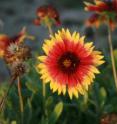College students want more information about native wildflowers
A new trend shows native wildflowers are becoming more popular with consumers. The wildflower seed industry has experienced gains in popularity over the past 30 to 40 years and is considered to be a maturing, highly competitive market. In Florida, for example, a 2005 survey estimated sales of native plants in the state totaled almost $316 million. College students do not fit the traditional demographic profile of gardening and landscaping consumers, but today's horticulture students are tomorrow's decisionmakers—those who will determine how and if native wildflowers will be used in educational programs, gardening, landscaping, and revegetation projects. A research team from the University of Florida designed a web-based survey that investigated the awareness, perceptions, and interest in native wildflowers among Florida college students enrolled in plant-related disciplines, and discovered some corresponding recommendations for educators.
The study, published in HortTechnology, asked Florida college students to rate their level of awareness of Florida native wildflowers (FNW), defined as a herbaceous annual or perennial species that was growing in Florida before the arrival of Columbus to the new world. Respondents were also asked to estimate the number of wildflowers they could identify by name and sight, what season(s) they expected FNWs to be in bloom, and in what areas or ecosystems FNWs were found.
While the survey results showed that students had a generally low awareness of native wildflowers, they expressed high levels of interest in learning more about the identification or cultivation of these species, seeing wildflowers (particularly on college campuses), and using wildflowers in different settings. Students also noted a preference for purchasing native wildflower seeds or finished plants from local retailers. "The retail environment seemed to be remarkably important; students indicated that they would prefer to purchase seeds or plants from local retailers rather than through the Internet by an overwhelming majority", wrote the research team.
"We used student responses from this study to discuss education and marketing opportunities toward native wildflowers", noted Hector Eduardo Peréz, corresponding author of the study. "Despite their lack of knowledge, students reported wanting to see, use, purchase, or learn more about these species. Therefore, an opportunity exists for educators and the industry to couple this enthusiasm for wildflowers with multiple experiences in wildflower education and exposure."
The researchers added that possible educational opportunities could include using wildflowers in plant identification, biology, ecology, and propagation courses. Field activities involving hands-on cultivation and management of FNWs in the landscape or restoration settings were also recommended. "Educators could consider using wildflowers as part of elective courses, such as in floral arranging or in large-scale introductory courses intended to interest students in particular. Such efforts can influence future decisionmakers and are likely to benefit the native wildflower market," the study concluded.


